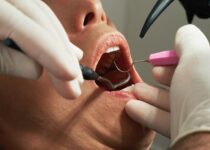Cold sores : the causes of cold sore
Known by the popular name ” wild fire ” or ” cold sores “, the herpes labialis is manifested by the appearance of a cluster of painful blisters, usually on and around the lips. Exceptionally, these little pimples can appear on the inside of the nose, on the edge of an ear, on the chin or on a cheek.
Cold sore is an infection caused by a virus called herpes simplex virus type 1 (HSV-1). In rare cases, the herpes simplex virus type 2 (HSV-2) may be involved. The latter, however, is usually associated with genital herpes.
Prevalence
Prevalence
The infection with HSV-1 is widespread . Depending on the region of the globe, 50% to 90% of the population has been infected with this virus. The first infection usually occurs before the age of 20, most of the time in infancy, and usually does not cause any symptoms. Moreover, the majority of infected people will never have symptoms, so no visible blisters. The virus is in the body, but remains inactive.
According to a survey carried out in France in 2006 among 10,263 adults, around 15% of respondents claimed to have had at least one cold sore outbreak during the previous year 1 . Other studies show that around 30% of adults suffer from cold sores occasionally 3 .
Transmission mode
Once you become infected with HSV-1, the virus persists in your body for life , without causing permanent symptoms. It is said that people who have been infected with this virus are carriers . The virus lurks in the nerve ganglia, located at the base of the skull ( trigeminal nerve ganglion , in particular).
From time to time, for various reasons (fatigue, fever, exposure to the sun …), the virus “wakes up” and triggers a herpes sore , always located in the same region. The frequency of these relapses varies greatly from person to person. For reasons that are not yet known, some people will not have recurrence . On the contrary, others will have a few or more per year.
Cold sores are contagious to people who have never been infected with the virus, especially those who have weakened immune systems. When lesions appear again, it does not mean that it is a new infection. Therefore, virus reactivations are unrelated to recent contact with an infected person.
Person-to-person transmission
- Most risky period . It occurs when the blisters have burst. Transmission then occurs through direct contact with the vesicles or with contaminated objects (utensils, towels, etc.) or even through saliva. The fluid in the vesicles contains viruses that can enter the lining of the mouth and infect a new person. Lesions are contagious until they are completely dry.
- The virus can also be spread through saliva in the absence of symptoms, but this is rarer. Indeed, certain phases of reactivation of the virus occur without causing lesions on the lips. It can even happen that a person gets cold sores from someone who doesn’t know they have the virus.
- In adults, kissing and oral / genital sexual contact are the main routes of transmission. So, cold sores can cause genital herpes, and vice versa.
Transmission in the same person
Rarely, the virus can spread from the lips to other parts of the body if the fingers touch the lesions, then the mucous membranes of the eyes (conjunctivitis or corneal ulcer), inside the mouth (herpetic gingivostomatitis) , nose, and genitals (genital herpes). Sometimes lesions appear on the fingers.
Consequences
Embarrassing, herpes lesions can occur at the least appropriate time. They do not have significant health consequences except for people who have a weakened immune system (for example, due to medication, AIDS, or any other disease that weakens the immune system). In these people and in young children, infection with HSV-1 can lead to serious complications.
When to consult?
- For lesions that do not heal in 1 to 2 weeks .
- In case of fever or very intense symptoms during an outbreak of herpes.
- If recurrences are frequent.
- In case of illness that affects the immune system.
- If the eyes become sensitive to light during or after an outbreak, this may be a sign that the infection has reached the eyes.
Symptoms of cold sores
First cold sore attack
Most of the time (90% of cases): no symptoms ;
If there are symptoms, they are often pronounced, especially in young children . The lips and the entire lining of the mouth may be affected, to the point where the child may have difficulty swallowing . We speak of acute gingivostomia . Often a high fever is present. Spontaneous healing of lesions can take up to 14 days
Recurrences
Recurrences correspond to the reactivation of the virus , which causes the appearance of a herpes pimple on the lip.
- Recurrences are often preceded by the following symptoms: tingling , itching, burning, swelling or numbness at the edge of the lips. A general malaise (fatigue, fever) may occur.
- From a few hours to 1 day later, a set of small, red, painful blisters appear. Filled with liquid, they eventually burst, then they form a crust.
People at risk and risk factors for cold sores
- People with herpes simplex virus type 1 (the majority of adults);
- People with immune deficiencies are more prone to frequent recurrences and prolonged flare – ups of herpes . These include people who are infected with HIV / AIDS, or who are undergoing treatment for cancer or an autoimmune disease ( immunosuppressive therapy ).
Risk factors
Once the virus has been contracted, various factors contribute to the recurrence of symptoms :
- Anxiety, stress and fatigue;
- A rise in temperature , as a result of a fever or exposure to the sun;
- Of dry lips ;
- Flu, cold or other infectious disease;
- Local trauma (dental treatment, cosmetic treatment to the face, a cut, a crack);
- In women, menstruation;
- A poor diet ;
- Taking cortisone .
Prevention of cold sores
Can we prevent?
Since HSV-1 infection is very widespread and is transmitted mainly during childhood , it is very difficult to prevent it . However, the following precautionary measures can be taken.
Precautionary measures against cold sores
- Avoid kissing someone who has a cold sore rash until the blisters are completely dry. The fluid inside the vesicles contains viruses.
- Avoid using utensils or objects that may have come in direct contact with the saliva or mouth of an infected person, especially during a herpes outbreak.
- Avoid oral / genital contact during a cold sore or genital herpes rash in your partner. The herpes simplex virus type 2 (which causes genital herpes) can cause cold sores.
Measures to prevent recurrence in an infected person
Determine the triggers. First, try to discover the circumstances that contribute to the recurrence. Try to avoid them as much as possible (stress, certain medications, etc.). The sun exposure is a common recurrence factor to many people. In such a case, apply a protective balm against the sun on your lips (SPF 15 or more), winter and summer. This measurement is even more important at high altitudes and in tropical regions. You should also moisturize your lips with a moisturizing balm . Dry and cracked lips indeed provide a fertile ground for the appearance of lesions.
Strengthen your immune system. Experts believe that the control of a herpes virus infection is largely based on strong immunity . A weak or weak immune system contributes to recurrence. Some key factors:
- a healthy diet.
- good sleep;
- physical activity.
Take antiviral drugs. The doctor may prescribe antiviral tablets as a preventive measure in more serious cases: large and frequent rashes, people with an immune deficiency or AIDS. This can help reduce the frequency of recurrence.
You may also like:
- Canker sores – Causes, Symptoms and Treatments
- Tooth decay: all you need to know about cavities
- Dental occlusion – Definition, Defects, What to do
- Dental arthritis: treatments, duration, what to do in the event of a crisis?


